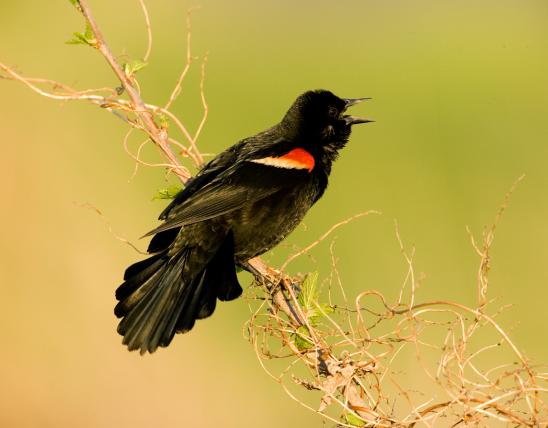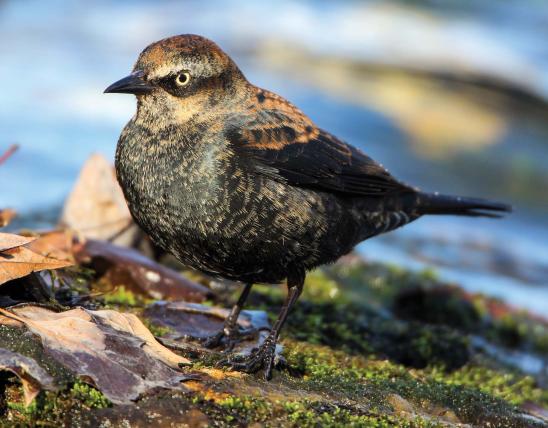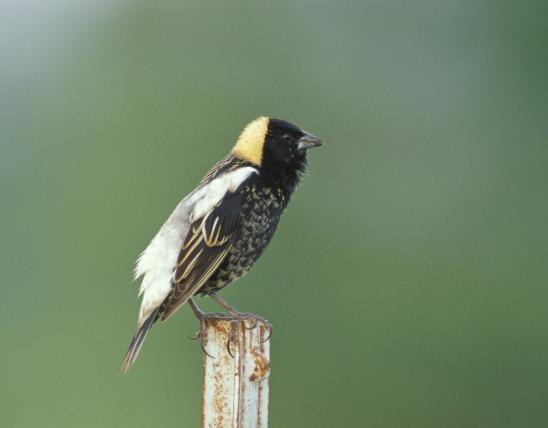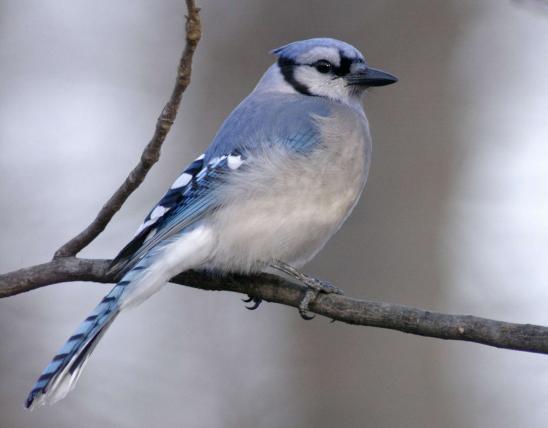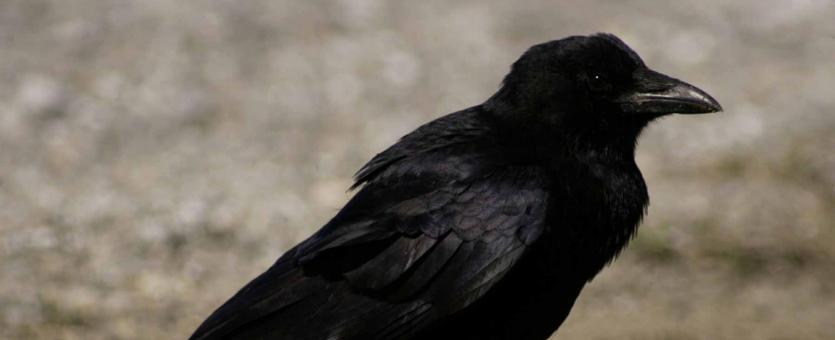
American crow adults are entirely black with a long, heavy bill. In bright sunlight there may be a purplish sheen on the highlights of the plumage. The tail is rounded at the tip, not wedge-shaped as in the common raven, a former breeding species that no longer even occurs in Missouri. Voice is the well-known “caw, caw.” Young birds are more nasal, resembling the voice of the fish crow.
Similar species: A more southern species, the fish crow (Corvus ossifragus) is expanding its range in southwestern Missouri, especially along trout streams. It is slightly smaller than the American crow. The best way to distinguish it is by its voice, a distinctive two-note, nasal, “AAH—aah” with the first syllable higher than the second; also a more nasal “ca aaaw” and “calk calk calk.” It is an uncommon resident of the Mississippi Lowlands and riparian areas north along the Mississippi River nearly to Iowa, and the Missouri River to mid-Missouri. Look for it on river and pond banks and in wet fields.

Habitat and Conservation
Food
Status
Life Cycle
Human Connections
Ecosystem Connections


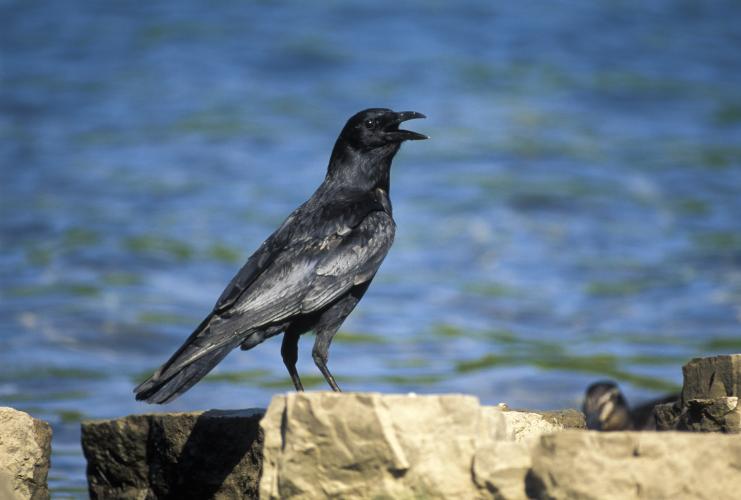

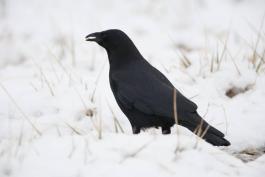

Where to See Species
About 350 species of birds are likely to be seen in Missouri, though nearly 400 have been recorded within our borders. Most people know a bird when they see one — it has feathers, wings, and a bill. Birds are warm-blooded, and most species can fly. Many migrate hundreds or thousands of miles. Birds lay hard-shelled eggs (often in a nest), and the parents care for the young. Many communicate with songs and calls.























